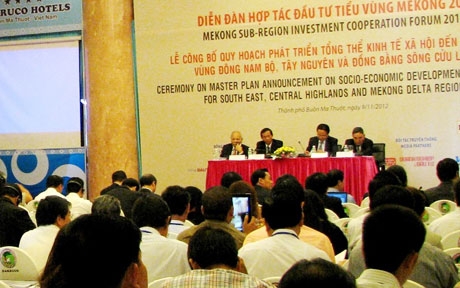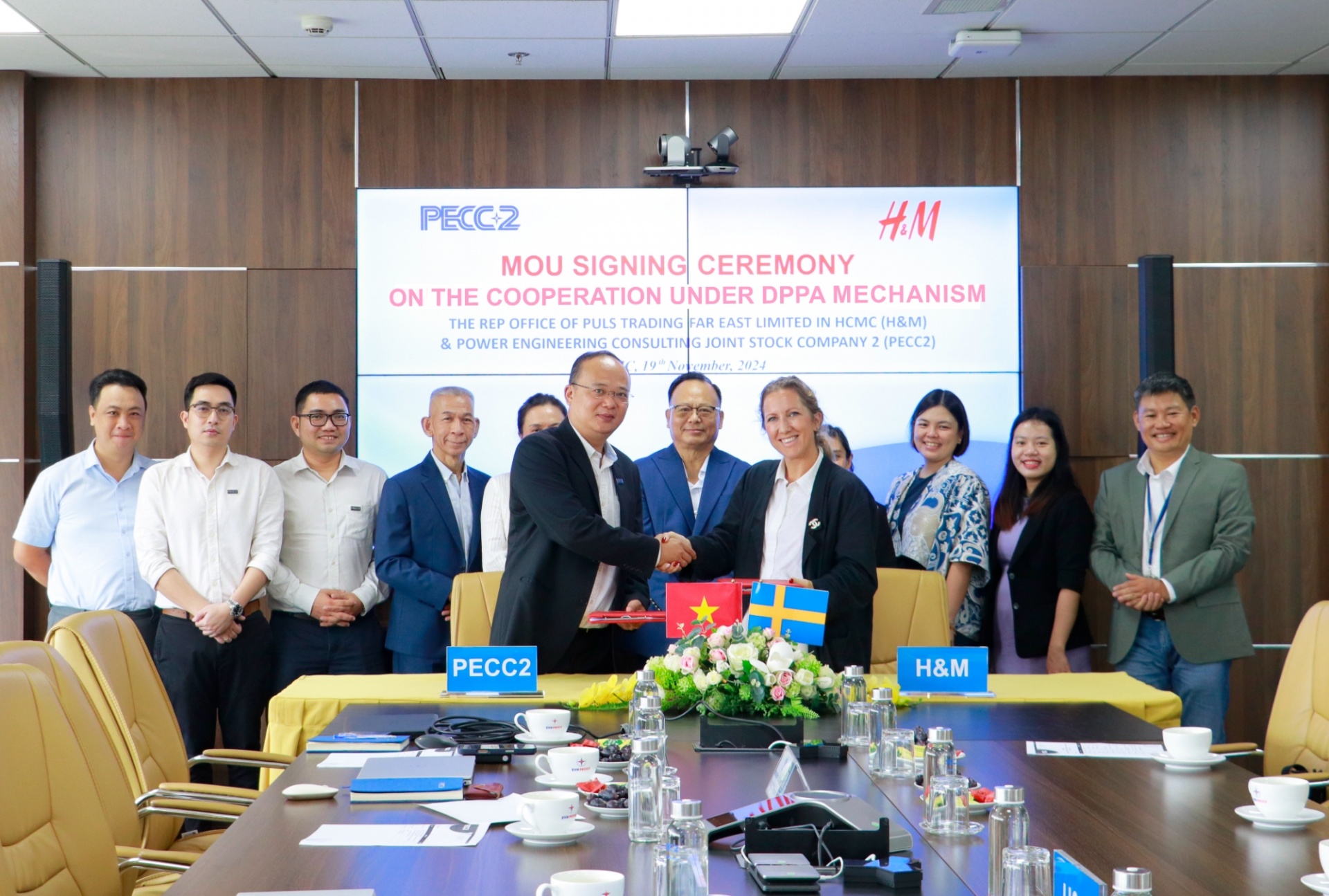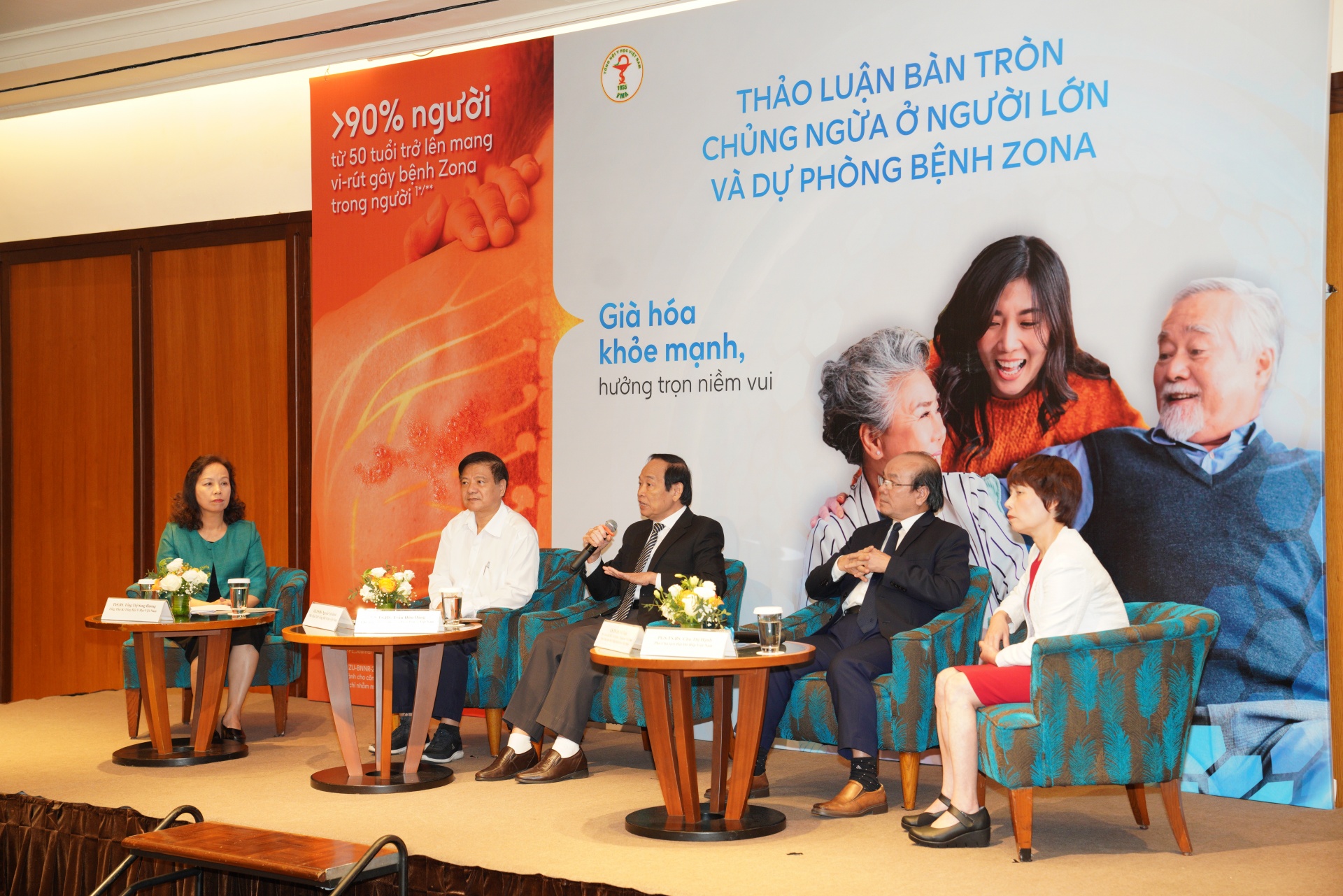Forum talks up CLV development triangle

About 300 delegates and guests from the three countries attended the forum, organised by the Vietnam’s Ministry of Planning and Investment (MPI), in partnership with Vietnam’s Association of Foreign-Invested Enterprises (VAFIE) and the Vietnam-Laos-Cambodia Association for Economic Cooperation Development.
Dang Xuan Quang, deputy head of the Foreign Investment Agency, said the Vietnamese government was encouraging Vietnamese companies to invest in the development triangle. Many Vietnamese enterprises have gained encouraging successes in doing business in Cambodia and Laos, he said.
He proposed the Cambodian and Laos sides speed up licencing investment projects by Vietnamese companies, especially large-scaled hydropower, mining and industrial crops projects.
The triangle comprises 13 provinces – Mondulkiri, Stung Treng, Rattanakiri and Kratie of Cambodia, Attapeu, Saravan, Sekong and Champassak of Laos, and Kon Tum, Gia Lai, Dak Lak, Dak Nong and Binh Phuoc of Vietnam.
The region covers 144,600 square kilometres with a population of 6.7 million. The whole area’s socio-economic development level was still low, according to MPI. Most provinces in the triangle are located in mountainous or highland areas. Carrying out cooperation projects in infrastructure development is later than scheduled, according to the ministry. One of things the triangle should do more effectively is calling for official development assistance funds from overseas, like Australia and Japan, and international financial institutions like the World Bank, Asian Development Bank.
Some of the cooperation directions for the border region are to continue the work in its preferential mechanism to reduce the customs clearance time and costs of goods crossing the borders.
Cao Van Ban, from the Vietnam-Laos-Cambodia Association for Economic Cooperation Development, said triangle traffic links were mostly through roads, though the three countries had waterways and air links. “Therefore, road upgrades and development will play an important role,” said Ban.
National Highway 14 linking Ho Chi Minh City with Dak Lak province, Vietnam’s coffee growing hub, has many rough sections in the province, Dak Nong and Binh Phuoc. It normally takes 10-12 hours to drive through the 300km.
Le Ngoc Bau, director of the Central Highlands Agriculture Forestry Science and Technology Institute of Vietnam, said the country had advantages for cooperation in coffee and rubber development in Laos.
Vietnam has many coffee nursery technical advances can be transferred to Laos such as irrigating and fertilising coffee trees techniques, he said.
Phung Ngoc My, vice chairman of Gia Lai People’s Committee, said his province was calling investors for projects of a beer brewery, tanning factory, engineering products factory, vegetable oil factory, and a tire and inner tire project.
MPI vice minister Dao Quang Thu said: “The three Mekong countries have many investment cooperation opportunities. Therefore, implementing investment cooperation activities effectively will make more contributions to socio-economic development of each country.”
Also at the forum, MPI announced the three master plans for socio-economic development until 2020 of Vietnam’s Central Highlands, Southeast Region and Mekong Delta.
What the stars mean:
★ Poor ★ ★ Promising ★★★ Good ★★★★ Very good ★★★★★ Exceptional
Related Contents
Latest News
More News
- Mitsubishi Estate launches Logicross Hai Phong - a milestone in logistics evolution (November 20, 2024 | 14:32)
- Semiconductor workforce partnerships deliver industry-relevant training (November 20, 2024 | 10:58)
- German Quickpack to invest $31.7 million in Long An province (November 20, 2024 | 09:31)
- Foreign-invested enterprises drive logistics investment in the southeast region (November 20, 2024 | 09:27)
- Chile visit underscores trade benefits (November 19, 2024 | 10:00)
- Trump’s second term impacts sci-tech activities and industry 4.0 technologies (November 18, 2024 | 10:00)
- Vietnam eyes nuclear revival to bolster energy security (November 14, 2024 | 16:46)
- Kyokuyo completes $13.5 million seafood factory in Vietnam (November 14, 2024 | 12:19)
- VinFast receives $3.5 billion funding from Vingroup and Pham Nhat Vuong (November 14, 2024 | 06:38)
- Localities sprint to reach FDI targets (November 13, 2024 | 10:00)


 Tag:
Tag:

















 Mobile Version
Mobile Version